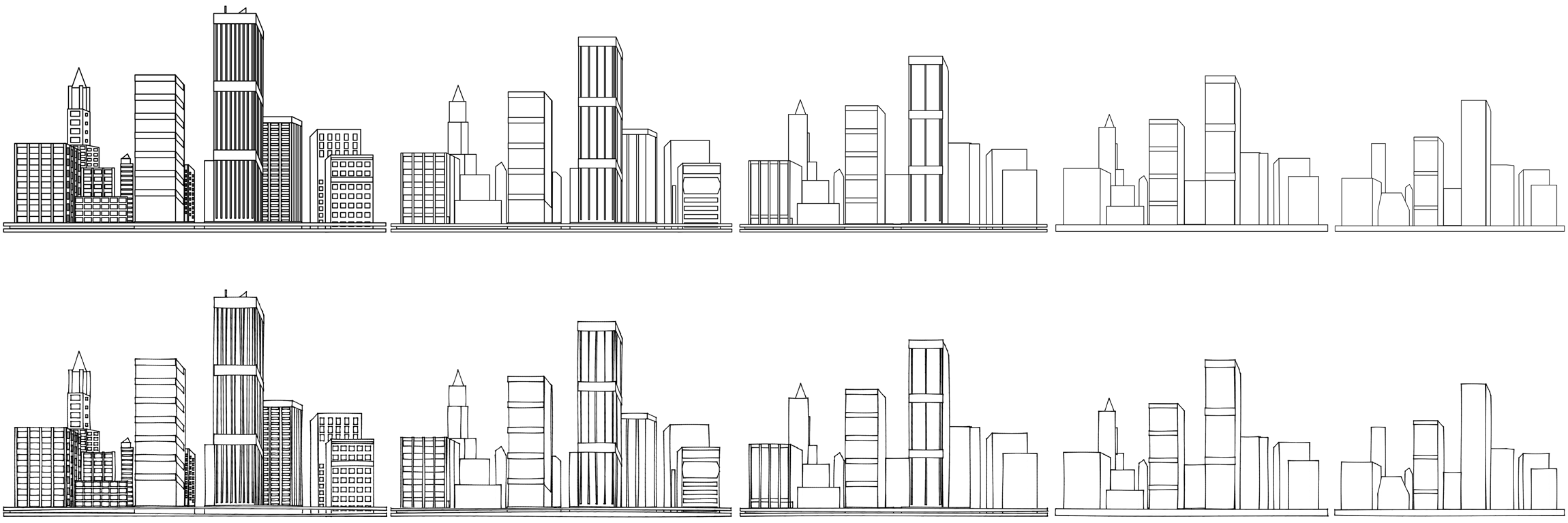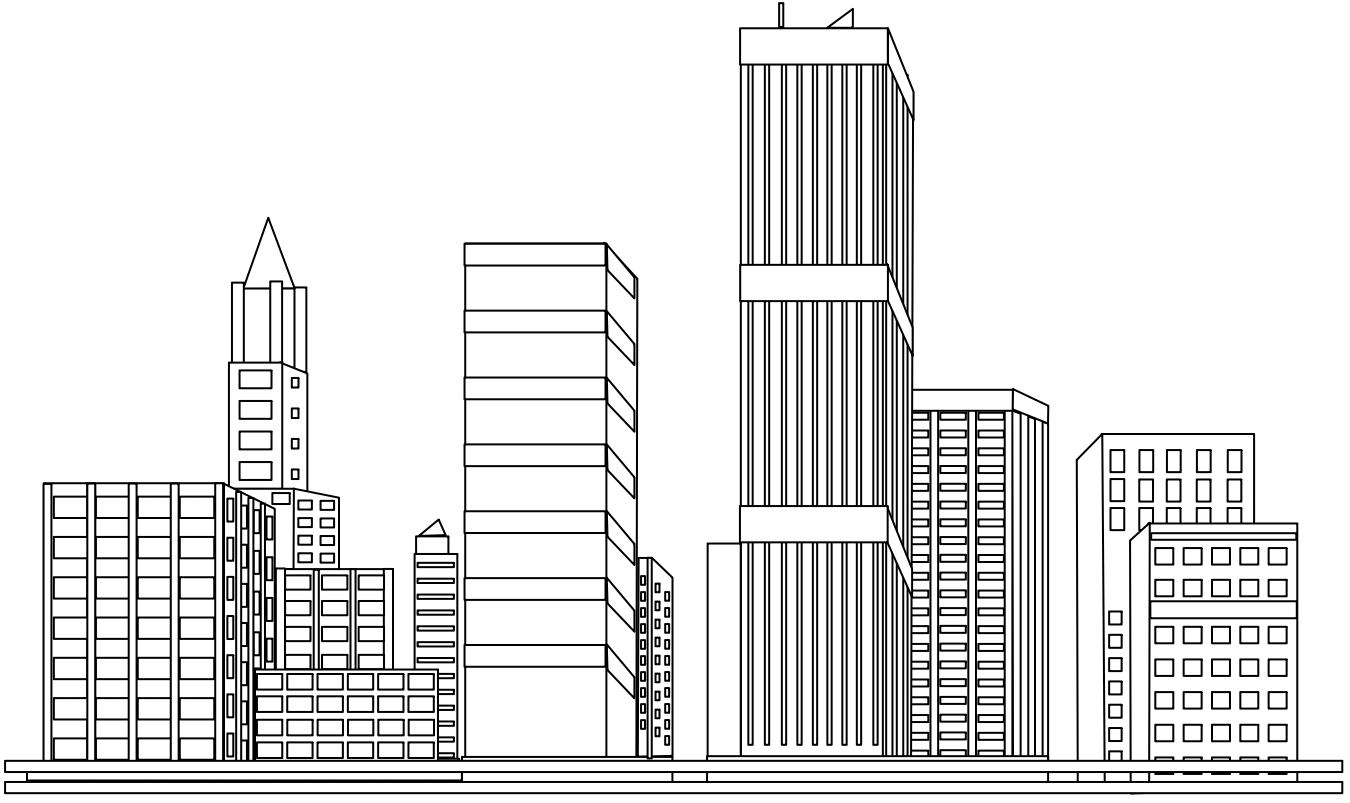Conjoining Gestalt Rules for Abstraction of Architectural Drawings
ACM Transactions on Graphics (Proceedings of SIGGRAPH Asia 2011)
Liangliang Nan1
Andrei Sharf2
Ke Xie1
Tien-Tsin Wong3
Oliver Deussen4
Daniel Cohen-Or5
Baoquan Chen1
2Ben Gurion University, Israel
3The Chinese University of Hong Kong, China
4 The University of Konstanz, Germany
5Tel Aviv University, Israel



Figure 1: Simplification of a complex cityscape line-drawing obtained using our Gestalt-based abstraction. Top and second rows show the results without and with NPR sketchy rendering style, respectively. Third row shows the zoom out animation of top row with more intermediate levels. Bottom row shows the animation of the color-coded abstraction sequence with more intermediate levels.
Abstract
We present a method for structural summarization and abstraction of complex spatial arrangements found in architectural drawings. The method is based on the well-known Gestalt rules, which summarize how forms, patterns, and semantics are perceived by humans from bits and pieces of geometric information. Although defining a computational model for each rule alone has been extensively studied, modeling a conjoint of Gestalt rules remains a challenge. In this work, we develop a computational framework which models Gestalt rules and more importantly, their complex interactions. We apply conjoining rules to line drawings, to detect groups of objects and repetitions that conform to Gestalt principles. We summarize and abstract such groups in ways that maintain structural semantics by displaying only a reduced number of repeated elements, or by replacing them with simpler shapes. We show an application of our method to line drawings of architectural models of various styles, and the potential of extending the technique to other computer-generated illustrations, and three-dimensional models.
Results

Figure 2: A sequence of abstraction steps. We color-code corresponding element groupings to visualize the computed gestalts. Two abstraction operations are performed, (a) summarization by reducing railings number in fences, and (b) embracing by replacing window elements with enclosing object. Although railings and doors overlap, their interaction is solved as railings are grouped together by regularity gestalt.

Figure 3: A sequence of gestalt based abstractions on the highly-detailed Taj Mahal.

Figure 4: Our method models the conjoining gestalts and correctly groups horizontal and vertical window structures and formations from a complex building facade.

Figure 5: An architecture directory is illustrated using thumbnails of simplified drawings from our method.

Acknowledgements
We thank the anonymous reviewers for their valuable suggestions. This work was supported in part by NSFC (60902104, 61025012, 61003190) , 863 Program (2011AA010500) , CAS One Hundred Scholar Program, CAS Visiting Professorship for Senior International Scientists, CAS Fellowship for Young International Scientists, Shenzhen Science and Technology Foundation (JC201005270329A, JC201005270340A) , China Postdoctoral Science Foundation (201104146), Israel Science Foundation, European IRG FP7, Lynn and William Frankel Center for Computer Sciences, Tuman Fund, Hong Kong RGC General Research Fund (CUHK 417411) and CUHK SHIAE Project Funding (MMT-p2-11) .
BibTex
@ARTICLE{Gestalt2011,
title = {Conjoining Gestalt Rules for Abstraction of Architectural Drawings},
author = {Liangliang Nan and Andrei Sharf and Ke Xie and Tien-Tsin Wong and Oliver Deussen and Daniel Cohen-Or and Baoquan Chen},
journal = {ACM Transactions on Graphics
(Proceedings of SIGGRAPH Asia 2011)},
volume = {30},
number = {6},
year = {2011}
}